Occasionally, our founder, Sian, enjoys exploring the natural beauty of Tanzania to take time out from the hustle and bustle of Dar es Salaam, a big city where our talented tailors are based.
Sian has visited several national parks including her favourites Tarangire and the Ngorongoro crater, both located in the north, which never fails to amaze her. Each visit is a totally unique experience, as you never know what you will find!
These two parks are a few hours’ drive west from Arusha town where one of our tailors, Hassan, is based and is where he built his own workshop from scratch. When Sian is ever in Arusha she always makes sure that she visits him.

Hassan and Sian standing outside his own workshop in Arusha
Hassan travels south to Dar es Salaam to work with our master tailor, Abdallah, on our latest ankara styles. Abdallah taught Hassan how to sew when they both lived in Arusha together and they are very supportive of one another.
The animals and birds that live in these wonderful national parks are also inspirations for many kitenge (ankara or African wax print) and kanga fabric designs. You may have spotted some on the fabrics of our unique African print clothing.
For example, the Guinea Fowl pattern is commonly found in kanga designs and animals including giraffes, zebras, ostrich and smaller birds such as chickens can also be found in some kitenge designs.

An original kitenge print with birds featured in the design
Tanzania has 16 national parks in total including the top 3 ‘Natural Wonders of Africa’ – The Serengeti National Park, Mount Kilimanjaro and the Ngorongoro Crater – and was recently voted the best safari country in Africa!
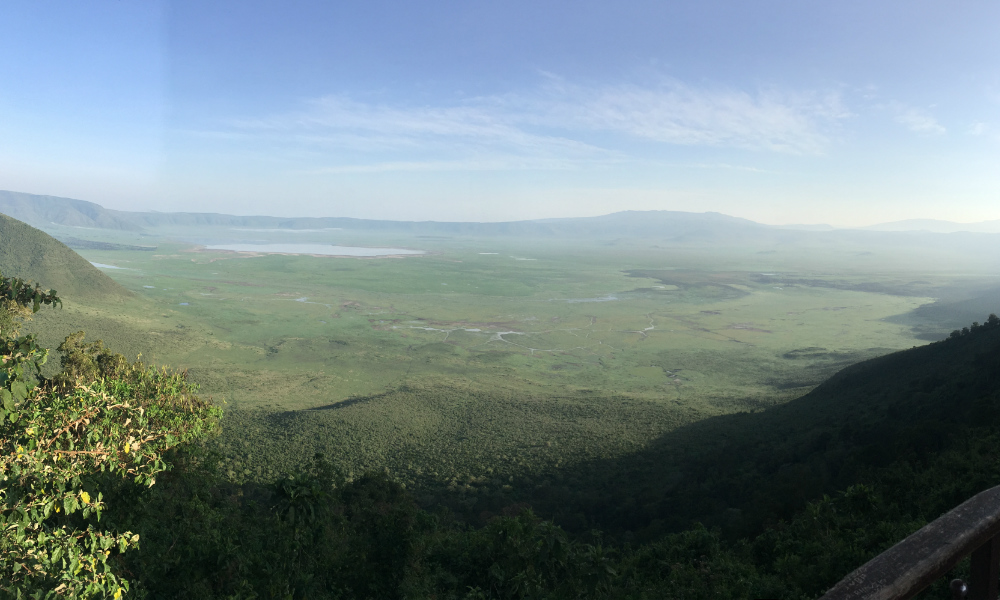
The view of the Ngorongoro Crater from the rim on a clear day
The East African country also boasts 7 UNESCO World Heritage sites: Kilimanjaro National Park, Kilwa Kisiwani Ruins, Kondoa Rock-Art Sites, Ngorongoro Conservation Area, Selous Game Reserve, Serengeti National Park and Stone Town in Zanzibar.
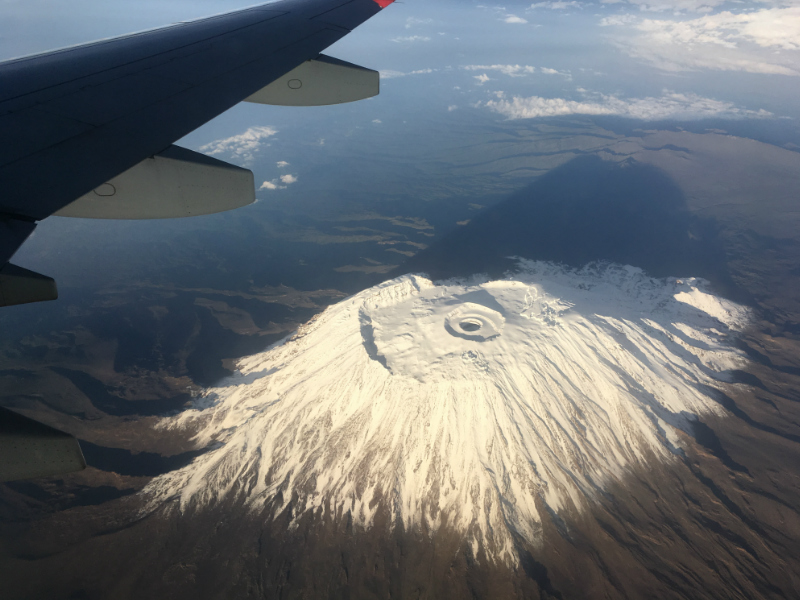
The peak of Mount Kilimanjaro, a UNESCO World Heritage site
The country is home to 20% of Africa’s larger mammals including the ‘Big 5’ (lion, leopard, rhinoceros, elephant and buffalo), which are the most difficult animals to hunt by foot.
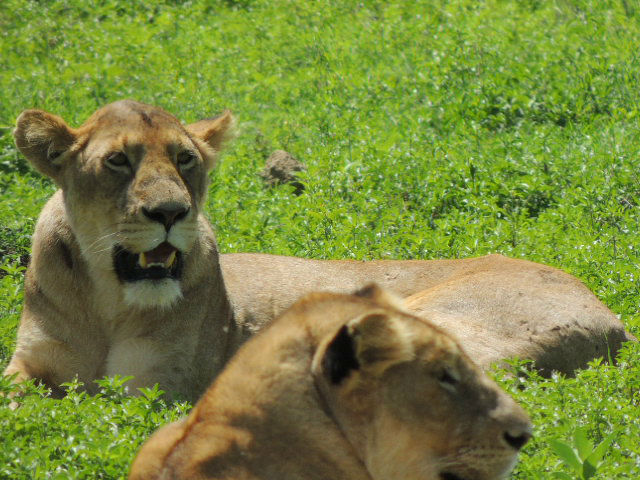
Lions (called ‘simba’ in Swahili) are one of the ‘Big 5’ game animals; this photo shows a pack of lionesses resting during the hot midday sun.
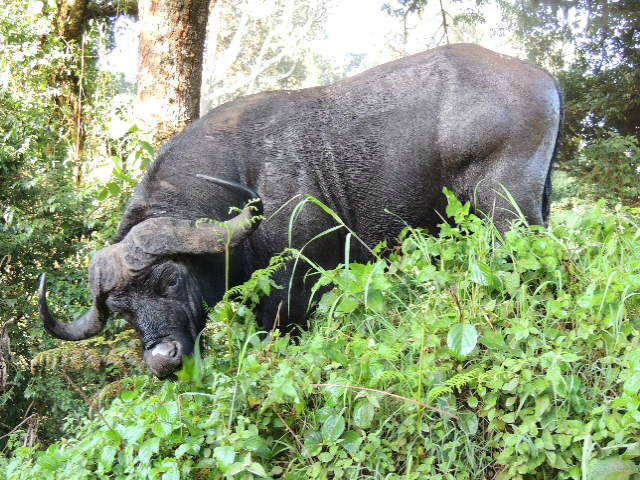
Buffalos are one of the ‘Big 5’ game animals; several lions have to work as a team to kill a buffalo and often get injured as a result
Read on to learn more about Tanzania’s world-famous national parks, their impressive wildlife and recommendations for planning your own trip.
The Ngorongoro crater covers almost 8,300 sq km and features volcanoes, grasslands, waterfalls, and forests. It is home to the nomadic Masai tribe after they were given special permission by the Tanzanian government to live there.
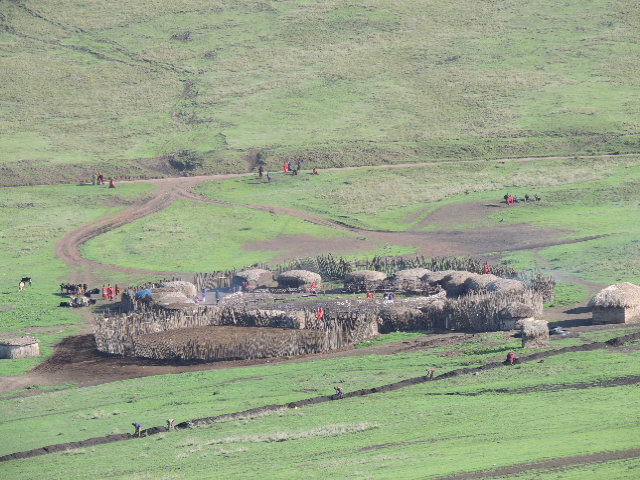
A Masai village near to the rim of the Ngorongoro crater
The steep walls are 600m from the crater floor. There is only one entrance into and out of the crater by safari vehicles. Your first view of the crater from the rim is stunningly beautiful and breathtaking. It is difficult to take it all in!
Due to the steep sides of the crater, 30,000 wild animals live inside including the ‘Big 5’. The crater is also home to: cheetah, hartebeest, hippo, hyena, jackal, reedbuck, serval, warthog, waterbuck, wildebeest, zebra, gazelle and numerous bird species.
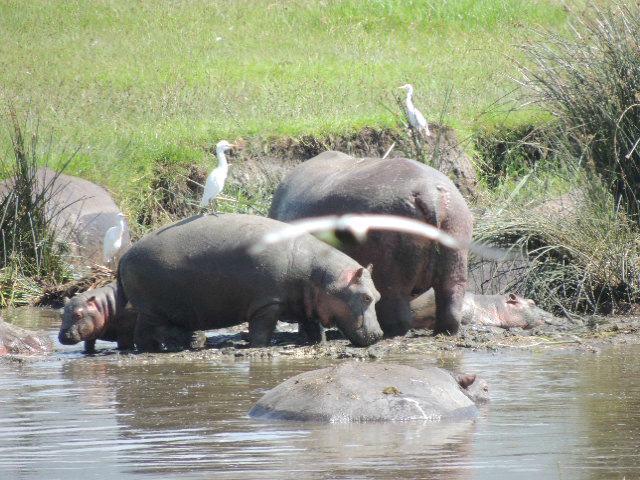
A family of hippos bathing in a swamp inside the crater
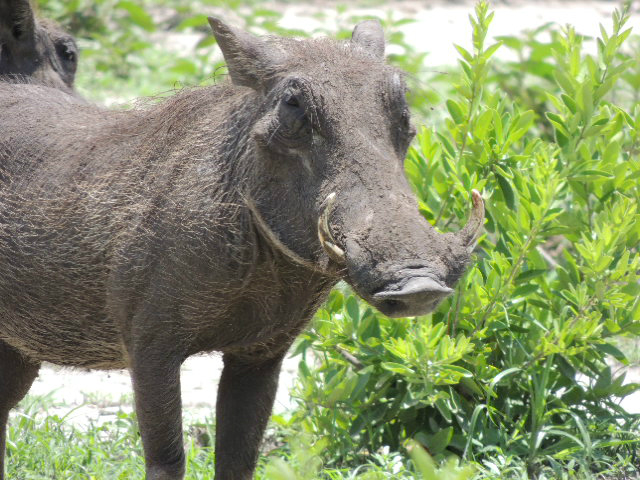
A warthog (A.K.A’ Pumba’ in the Lion King movie)
The Ngorongoro Crater is a great place to spot the rare black rhino, especially on calm days, as their ears do not like the wind! You can also spot vast numbers of flamingos standing in the lake and many giraffes live on the crater rim.
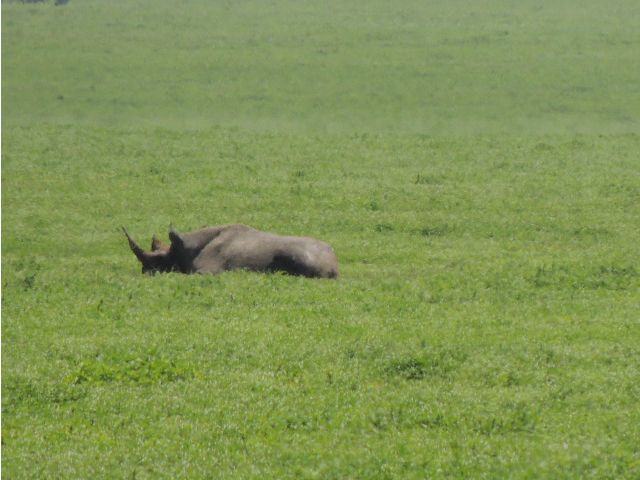
A rare black rhino sitting down on the crater floor
Arusha
This small park is very close to Arusha town and features the impressive Mount Meru (a 4-day climb). The park is famous for its birdlife and the black and white colobus monkey.
Tarangire
Tarangire National Park is named after its river. The park is famous for its wildlife including a large population of elephants and bird species, particularly during the dry season (June – September).
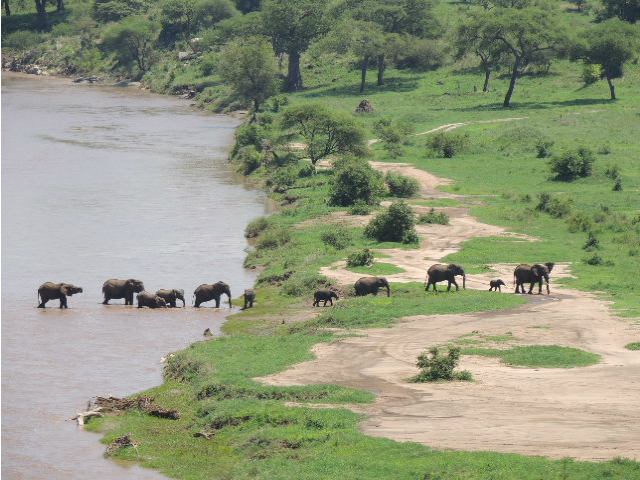
A family of elephants crossing the Tarangire River
Lake Manyara
This park is most famous for its birdlife and tree-climbing lions that lay on top of the branches of Acacia trees. The park is well-loved for its stunning scenery. Beyond the lake is the spectacular Great Rift Valley.
Serengeti
The Serengeti is one of the best places in the world to see an abundance of wildlife with over 3 million large mammals! In the Masai language ‘Serengeti’ means “endless plains”. It is here that you can see The Great Migration if you time your trip well.
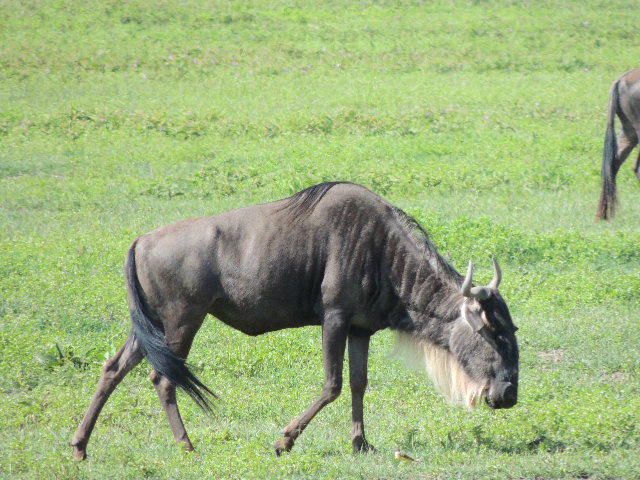
Wildebeest migrate annually in the Serengeti National Park
From May (or the beginning of June) huge herds of zebra, wildebeest and thomson gazelle start their 600-mile annual migration around the Serengeti followed by their predators: lion, leopard, cheetah, hyena, jackal, vultures and crocodile.
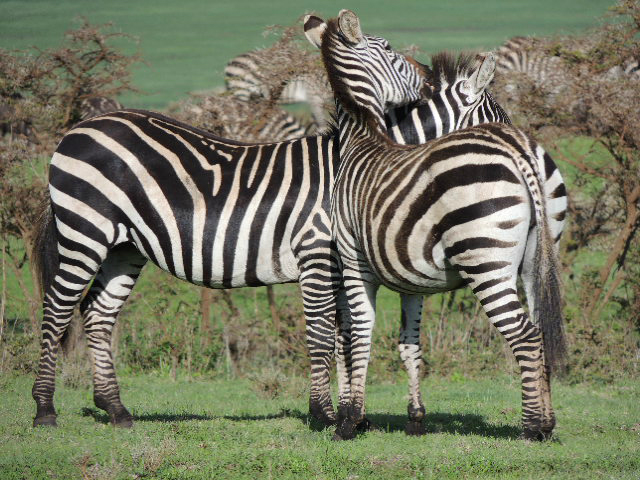
Zebras migrate annually in the Serengeti National Park
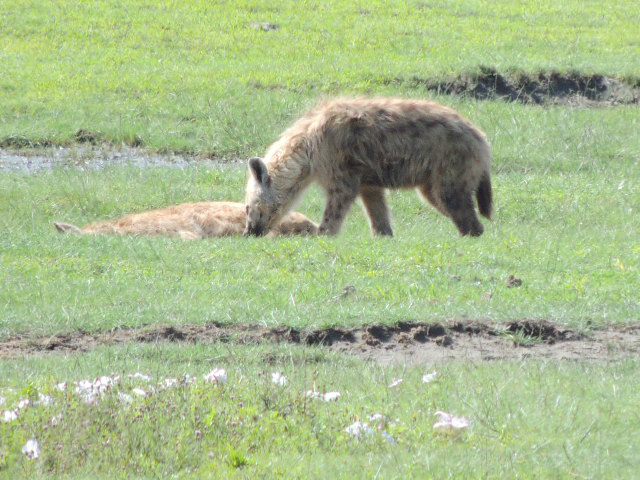
Spotted Hyenas taking a nap probably after eating
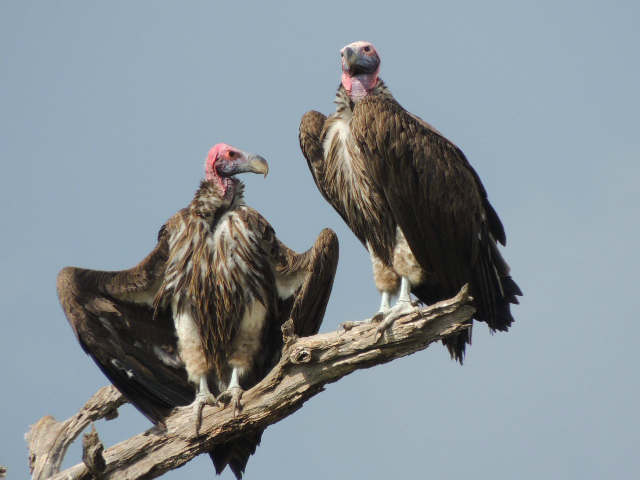
Vultures cooling their bodies during the midday heat
The animals’ 2000 km round journey is a search for water and fresh places to graze. The best time to see the migration is between June to August when the wildebeest cross over the crocodile-infested Grumeti River. The animals also have to cross the Mara River to reach the Masai Mara in Kenya during the migration.
Selous
The Selous game reserve is the largest, protected wildlife area in Africa and is larger than Switzerland! It also boasts the largest population of elephants in Tanzania. A great way of spotting wildlife is to take a boat down the Rufiji River during the dry season (July – November), which is the best time to visit.
Ruaha
Ruaha National Park is named after the Great Ruaha River and has spectacular scenery. It contains many different animals including various antelope species and birds. The best time to visit is also during the dry season.
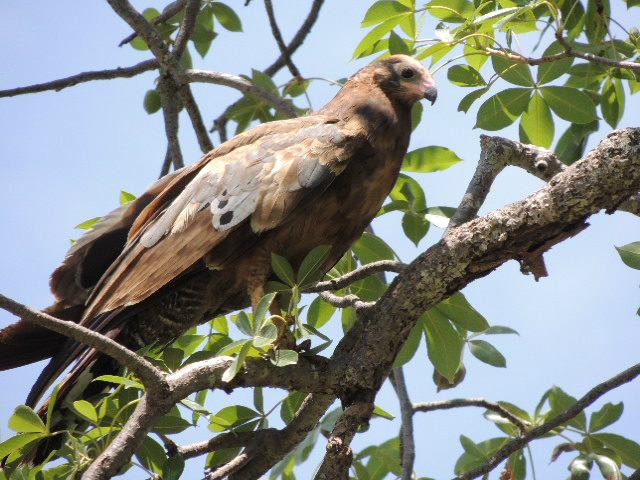
One of the many impressive bird species you can spot in the national parks
Other Parks
Gombe
Tanzania’s smallest park is only reachable by boat from Kigoma. It has a large forest, which is home to chimpanzees rarely seen in the wild.
Kitulo
Known locally as “God’s Garden” or the “Serengeti of Flowers” as it has over 350 types of plants, of which many are not found anywhere else in the world! It is also home to the Kipunji (Highlands Mangabey), the rarest monkey in Africa and some of the world’s rarest butterflies.
Mahale
The Mahale Mountains National Park is located next to Lake Tanganyika. It is also home to around 1000 rarely-seen chimpanzees and can only be reached by flight or boat from Kigoma.
Saadani
Saadani is Tanzania’s only coastal park situated on the shores of the Indian Ocean where green turtles breed on the beach. Elephants, buffalo, lions, leopards, hyenas, zebras and giraffes all live here.
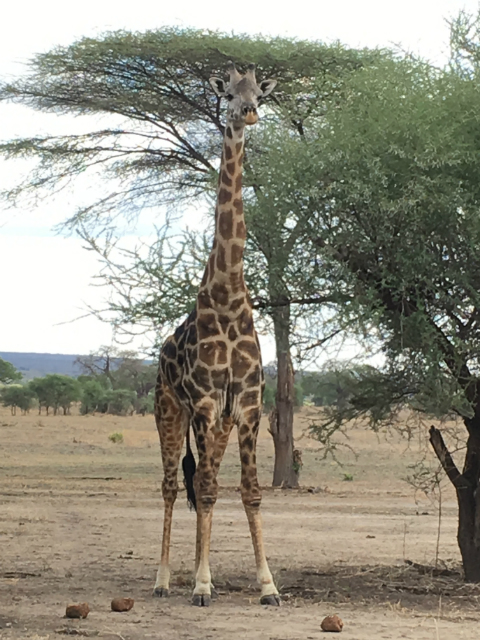
A Tanzanian Giraffe in the Tarangire National Park
Sign up to get 10% off your first order!
